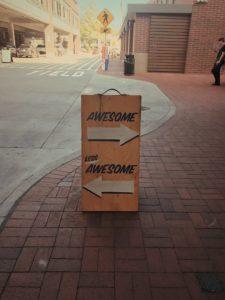How to Keep Nonprofit Employees Longer with Flexibility
 In my last article I talked about providing employees with praise, recognition and meaningful feedback in order to retain staff and build the type of job satisfaction and longevity that creates a sustainable nonprofit.
In my last article I talked about providing employees with praise, recognition and meaningful feedback in order to retain staff and build the type of job satisfaction and longevity that creates a sustainable nonprofit.
For nonprofit fundraisers, the “Great Resignation” was happening long before the pandemic. In fact, per Penelope Burk at Cygnus Applied Research, the average amount of time a fundraiser stays at his or her job is just 16 months.
“Oh, well” you say? “No big deal” you say?
Need I remind you fundraising is a relationship-building business? Relationships happen people-to-people, not people-to-institution.
All that work I’m constantly exhorting you to do to personally nurture, reward and develop bonds with your constituents as you support them on their donor journey matters.
You can’t afford the typical nonprofit staff turnover, and you need to do whatever it takes to make working for you a positive experience.
Lose a Fundraiser; Risk Losing a Donor Relationship
Fundraiser turnover results in the ongoing work of reporting back, asking for feedback and offering praise getting abridged or abandoned altogether. Trust me, this is a genuine real world concern. I work with countless nonprofits, and staff turnover leads to downgraded and lapsed gifts. You may think this won’t happen to you, but it will. When a donor doesn’t get the meaning they need, they drift away to other causes offering them a better return on their engagement. Don’t blame the donors; it’s just human nature to want to feel connected to other human beings.
And don’t make the mistake of thinking you can’t afford to keep your fundraiser by providing a better salary and other benefits, such as additional vacation time. Penelope Burk surveyed 1,700 fundraisers and 8,000 nonprofit chief executives, and found it would cost just $46,650 to keep a good fundraiser happy.
The direct and indirect costs of finding a replacement are $127,650. Hmmn… being pennywise and pound-foolish is not what I would call working smart.
Employee retention costs a fraction of employee recruitment, training and on-the-job learning. So seriously consider what you can do to work a lot smarter by treating your employees like the true treasure they are. As noted in my last article, a decent salary matters. I’m all for offering living wages! But many more things than money are motivators.
It’s time for a closer look at how flexibility in the workplace will help you shine.
Retain More Nonprofit Employees by Being Flexible
A recent guest essay in the New York Times,
Details

 I confess this is something I struggled with in my 30 years as a manager.
I confess this is something I struggled with in my 30 years as a manager.



 TRUTH BOMB:
TRUTH BOMB: The modern model is more like a vortex — an energized circle where everyone is equal. People move in and out as needed, and your job is to keep the energy flowing.
The modern model is more like a vortex — an energized circle where everyone is equal. People move in and out as needed, and your job is to keep the energy flowing.
 I’ve created for you a little “Declaration of Fundraising Independence” to help you become a fruitful philanthropy facilitator from this day forward.
I’ve created for you a little “Declaration of Fundraising Independence” to help you become a fruitful philanthropy facilitator from this day forward. No one can do it alone, sitting in their own little corner.
No one can do it alone, sitting in their own little corner.